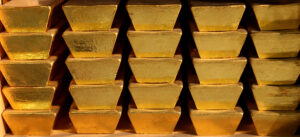Central Bank Gold Demand in First Half of 2023 Was The Highest on Record
The comments below are an edited and abridged synopsis of an article by SchiffGold.com
Net central bank gold purchases totaled 387 tons through the first half of the year, according to the World Gold Council. That was the highest first-half total since the WGC started compiling quarterly data in 2000.
Net central bank purchases were down in Q2 after setting a first-quarter record due to net sales of 132 tons between April and June. Central banks added 102.9 tons of gold to reserves in the second quarter.
Turkey was the biggest gold buyer in the first quarter but turned to selling in March. It resumed purchasing gold in June, adding 11.4 tons to its reserves.
Kazakhstan and Uzbekistan also sold gold during the first quarter of 2023. It is not uncommon for banks that buy from domestic production—such as Uzbekistan and Kazakhstan—to switch between buying and selling.
Russia, Cambodia and Germany reported slight declines in their reserves in Q2, likely due to coin minting.
Nine central banks were net gold purchasers during the first half of 2023.
The People’s Bank of China was the biggest gold buyer in H1, adding 103 tons of gold to official holdings. Its purchases in the second quarter extended its buying streak to eight straight months.
Singapore ranked as the second-largest buyer during H1, adding 73 tons of gold to its hoard.
Seven other countries added gold to their holdings in H1: Poland (48 tons); India (10 tons); Czech Republic (8 tons); the Philippines (4 tons); Iraq (2 tons); the ECB (2 tons); and Qatar (2 tons).
According to the 2023 Central Bank Gold Reserve Survey, 24% of central banks plan to add more gold to reserves in the next 12 months, and 71% believe the overall level of global reserves will increase in the next 12 months. That was a 10-point increase over last year.

